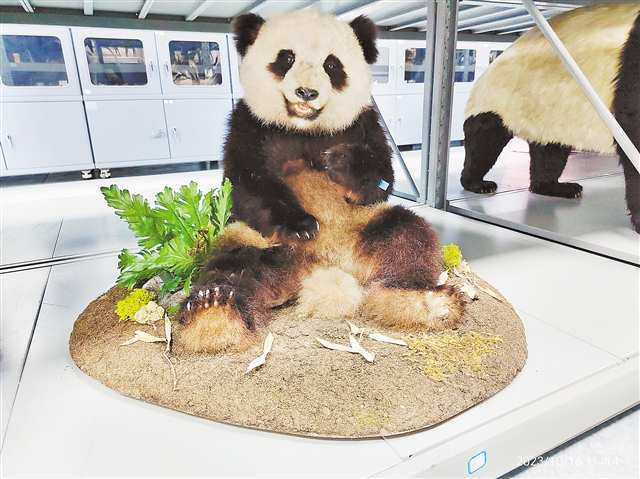Chongqing Natural History Museum to first open its treasure storehouse
2024-05-16 14:29:31

CHONGQING (CQEWS) -- To celebrate the upcoming International Museum Day on May 18, Chongqing Natural History Museum will open its 340-square-meter treasures storehouse to the public free of charge for the first time, which is home to more than 1,200 pieces of precious specimens from around the world. The public can book a visit through the WeChat official account of Chongqing Natural History Museum.
Approved by Chongqing Natural History Museum, we paid a visit its treasure storehouse in advance recently to share with readers this special world of animals.
Two panda specimens unveiled for the first time
In the vast storehouse, more than 1,200 pieces of animal specimens are classified and placed on a 3-story specimen rack. Some of them have made the storehouse their home for decades, while others are new members of the family.
The newest additions to the Museum’s collections are two pieces of giant panda specimens that have just been restored by a professional conservation team. Before the restoration, the two panda fur specimens were stored in the Museum for years.
Is it difficult to make the fur specimen ‘stand up’?
It is difficult to present the most natural posture of animals in specimens, Zhao Liwei answered.
So, what do the restored panda specimens look like? One of them is lying on the rock, tilting its head and sticking out its small pink tongue; the other is sitting on the ground and cocking its head with a smile.
As the oldest nature museum in southwest China, Chongqing Natural History Museum houses several giant panda specimens in its treasure storehouse, which are displayed in different postures.
Rare albino black bear specimens collected by the Museum
In addition to various panda specimens, a rare piece of albino black bear specimen is one of the treasures in Chongqing Natural History Museum.
To provide visitors with a better viewing experience, the albino bear specimen will be displayed next to a black bear specimen.
Albino bears are rarely seen in nature, not to mention the specimens of albino bears, said Zhao Liwei.
What exactly is an albino bear specimen like?
From a distance, the albino bear specimen looks like a miniature polar bear. It leaned forward, with its left palm slightly raised as if it was moving forward slowly.
Albinism has been observed in various vertebrate species but is relatively rare. The white, yellow-white, or light yellow appearance of an albino animal is usually caused by a genetic mutation that prevents the normal synthesis of melanin in the animal’s body. (Translated by Yuki, Fathom Language Limited)
Editor:江夷玮
 手机阅读分享话题
手机阅读分享话题